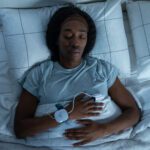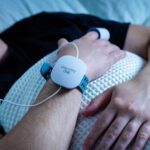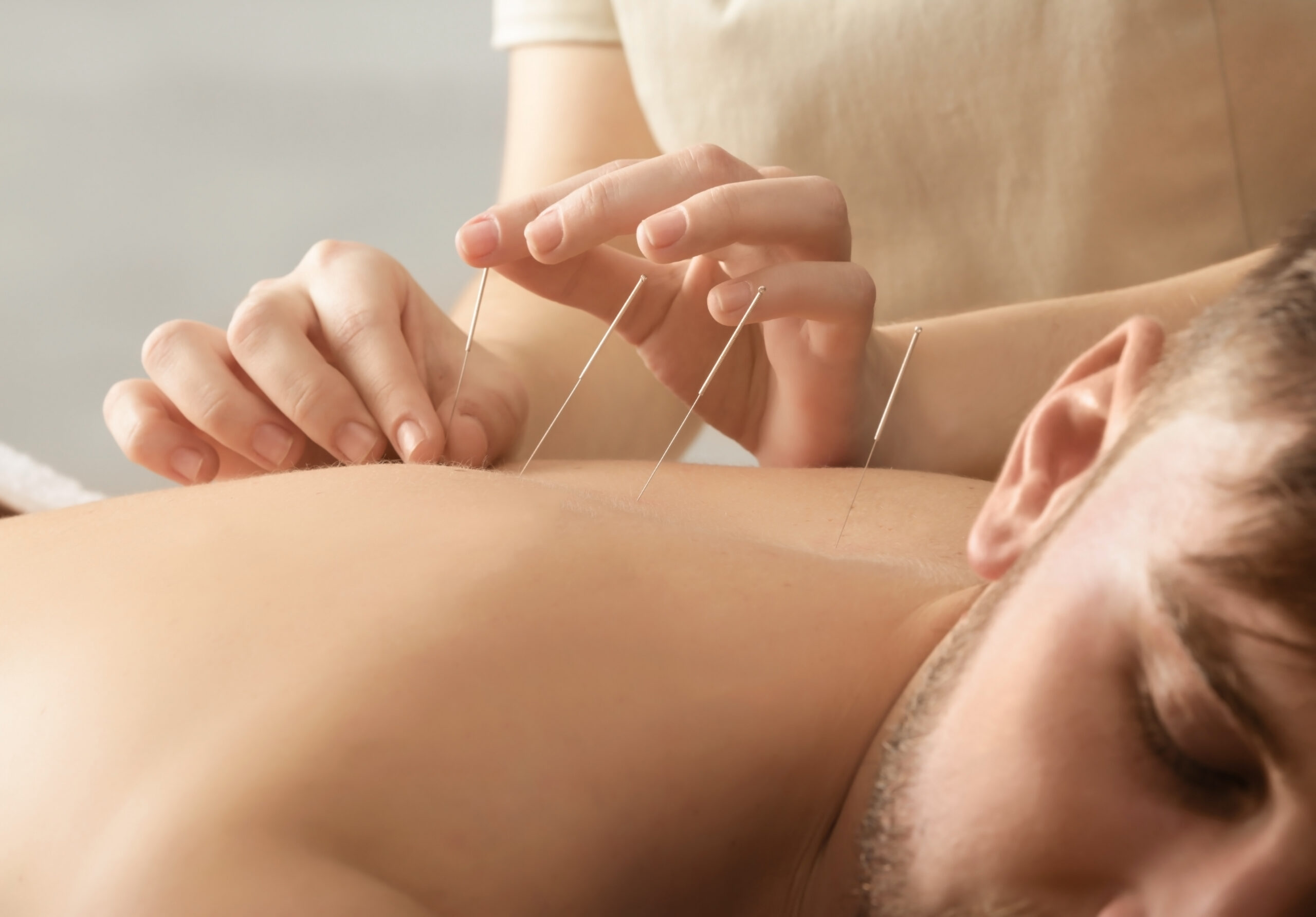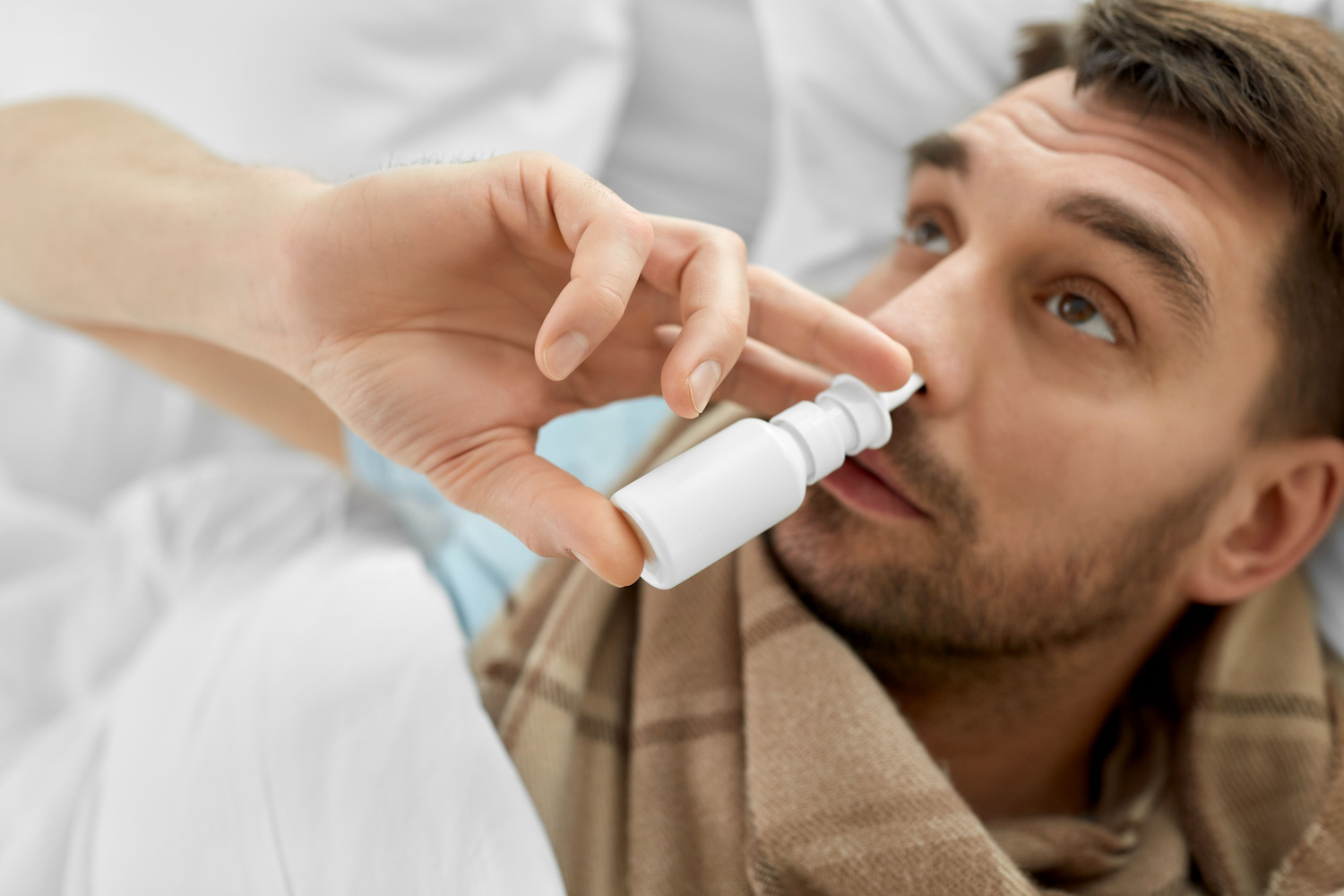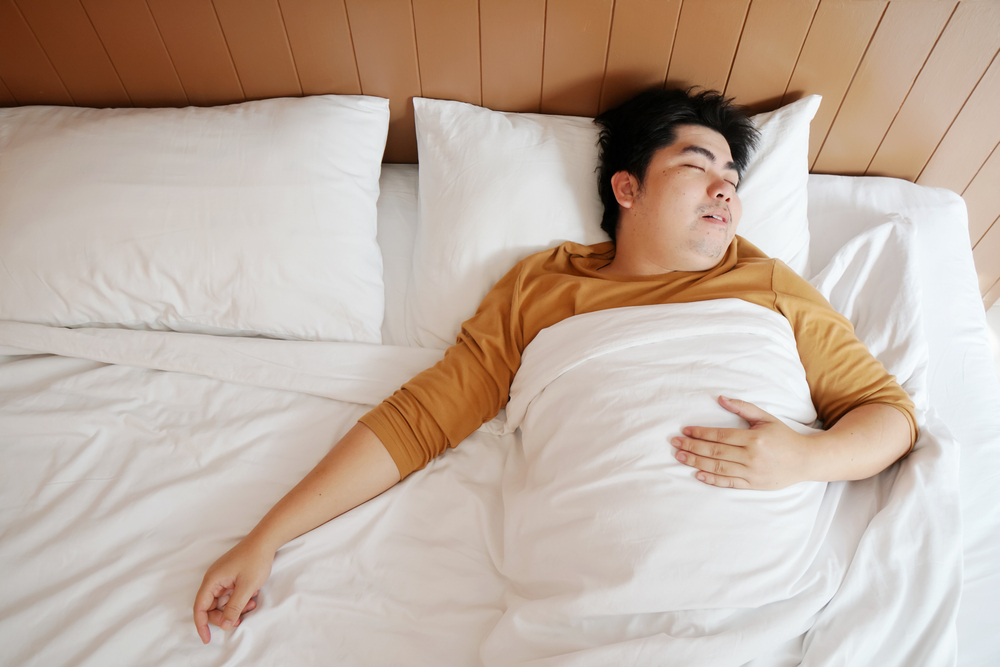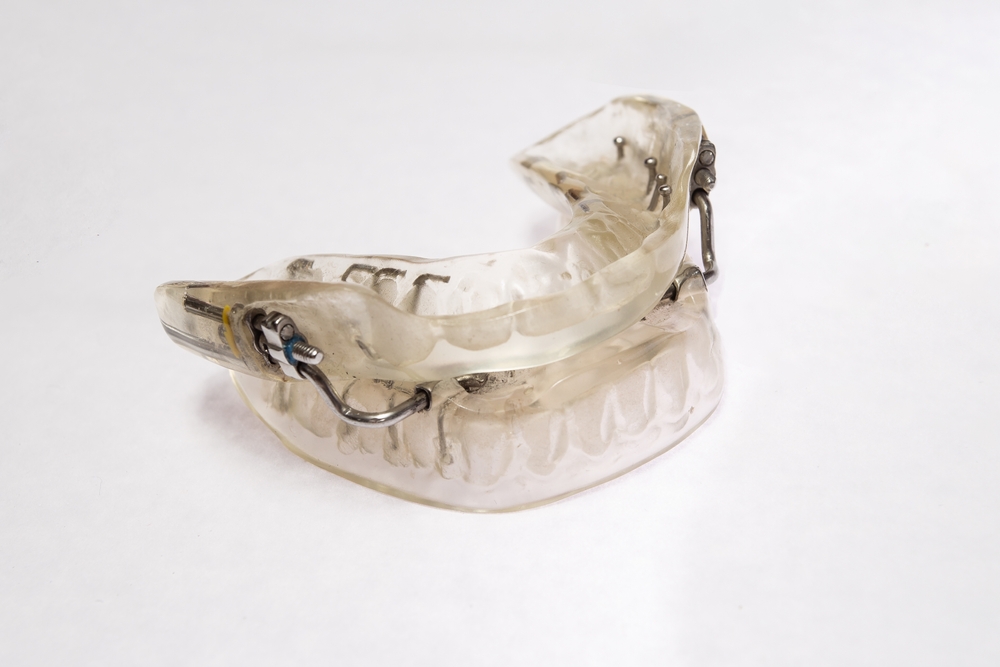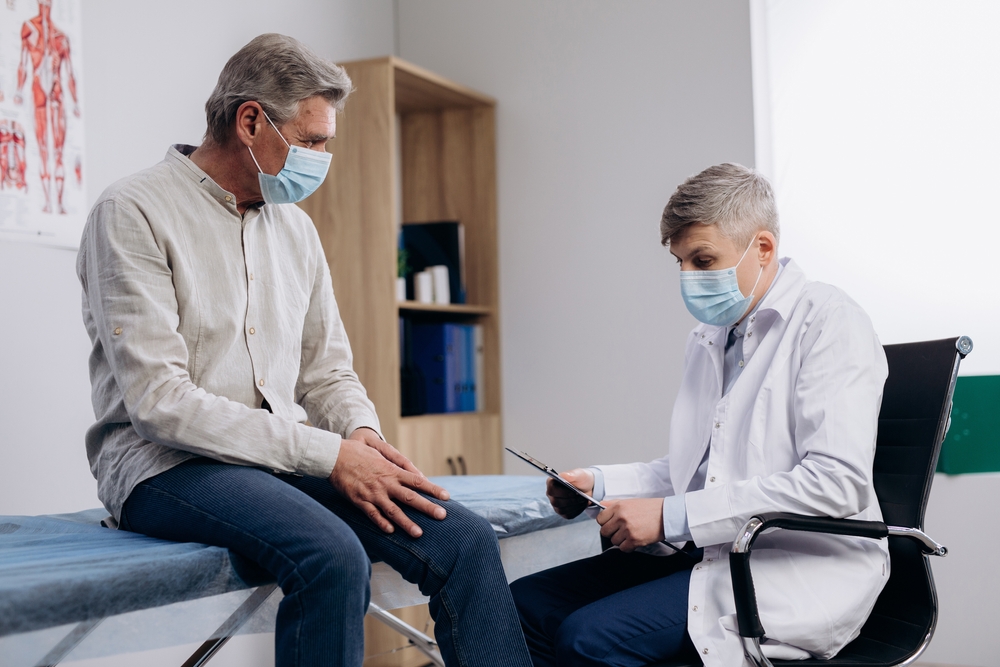Obstructive sleep apnea (OSA) is a common condition that affects between 10% and 30% of people. People with OSA experience recurrent episodes of complete or partial collapse of the upper airway during sleep. This can lead to snoring and gasping, disrupted sleep, daytime sleepiness, and morning headaches.
A range of treatments have been developed for obstructive sleep apnea, including respirators, oral appliances, surgical interventions, implanted nerve stimulators, oropharyngeal exercises, and lifestyle changes. If you’ve been diagnosed with OSA, learning more about possible treatments is a good first step toward getting a better night’s sleep.
Our Recommended At-Home Sleep Apnea Test
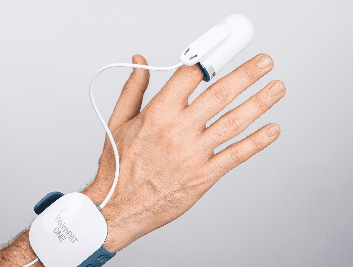
our partner at sleepdoctor.com
Save 54% on your Sleep Test Today
Shop Now“Wish I’d known how easy and affordable getting tested would be. Got my diagnosis fast, and now I’m actually getting decent sleep!”
Dawn G. – Sleep Doctor Customer
Positive Airway Pressure Devices
Positive airway pressure (PAP) therapy is a preferred method for treating OSA in both adults and children. PAP devices are machines that deliver pressurized air to a person’s airway. This helps keep the upper airway open, allowing the user to breathe freely and experience fewer disruptions while sleeping.
PAP machine users sleep with a mask that covers the mouth and nose or just the nose. A hose attaches the mask to a small machine placed near the bed. This device delivers pressurized air through the hose and into the airway, which helps stabilize soft tissues that relax at sleep onset, helping prevent airway collapse during sleep.
There are a number of different kinds of PAP devices:
- Continuous Positive Airway Pressure (CPAP): CPAP devices are the most basic and well-studied PAP devices. These machines provide continuous, consistent positive air pressure during use. Determining the correct pressure on the device usually requires overnight observation by a medical professional.
- Auto-adjusting positive airway pressure (APAP): APAP machines automatically adjust air pressure based on breathing patterns and vibrations caused by snoring. APAP may be appropriate for particular individuals with variable pressure needs.
- Bilevel positive airway pressure (BiPAP): BiPAP devices provide higher air pressure when a person breathes in and lower pressure when a person breathes out. BiPAP is typically used to treat OSA in patients that don’t respond well to CPAP therapy.
- Adaptive servo-ventilation (ASV): This is a type of BiPaP machine that automatically adjusts inhalation pressure according to the needs of the sleeper. ASV devices are often used to treat individuals with both OSA and central sleep apnea (CSA), but they are not recommended for people with certain heart-related health conditions.
Lifestyle Changes
If you have obstructive sleep apnea, your doctor may identify risk factors that you can address through behavior and lifestyle changes. Often, these changes are recommended in combination with PAP therapy. While modifying your behavior or lifestyle usually will not completely resolve OSA symptoms, it can lead to meaningful improvements.
- Reduce weight: Studies show that people who are overweight or obese see improvements in their OSA if they lose weight. Because many factors influence weight, including genetics, sustained weight loss can be challenging. However, some people are able to lose weight through diet, exercise, medication, or surgery.
- Avoid alcohol: Consuming alcohol can cause obstructive breathing events to last longer and happen more frequently. People with OSA may be advised to avoid alcohol entirely. Those who do choose to drink alcohol should avoid consuming it in the hours before bedtime.
- Avoid sedatives: Similar to alcohol, sedatives can make OSA symptoms worse. Talk to your doctor about whether any medications you’re taking could aggravate your OSA, especially any that treat depression or anxiety. If appropriate, your doctor may prescribe alternative medications.
- Avoid back sleeping: Back sleeping can worsen OSA. If this proves difficult, your doctor might suggest wearing a device around your chest or neck that vibrates when you lie on your back.
- Get exercise: Some research suggests that exercise may improve OSA symptoms, even when it doesn’t lead to weight loss.
Oral Appliances
Although positive airway pressure (PAP) therapy and lifestyle changes are the first-line treatments for obstructive sleep apnea (OSA), an oral appliance might be recommended if PAP treatment is not working or very uncomfortable. Additionally, oral appliances may be useful during travel, since they are highly portable and do not require electricity.
There are generally two types of oral appliances used to treat OSA.
- Mandibular advancement devices (MADs): MADs can effectively treat mild and moderate OSA and may improve symptoms in some patients with severe OSA. These one- or two-piece units are customized to a patient’s mouth and jaw They work by pushing the lower jaw forward, which helps open the upper airway.
- Tongue-Retaining Devices (TRDs): TRDs may be used if MADs are not effective. TRDs use suction to pull the tongue forward, which helps maintain an open upper airway. Although these devices are not as well studied, evidence suggests that some people who use them have about half as many breathing disruptions at night.
If your doctor thinks you will benefit from an oral device, you will be referred to a dentist with knowledge of OSA. This specialist can customize the device and fine-tune it to meet your tolerance and needs.
Surgery
Similar to oral appliances, surgery for obstructive sleep apnea is usually a second-line therapy that is recommended when a patient does not respond well to lifestyle changes and positive airway pressure therapy. Generally, surgery doesn’t completely resolve OSA, although it can improve symptoms for the long term.
In some cases, surgery may be a first-line therapy if there is a clear, surgically correctable issue causing OSA. This may happen more frequently in children who experience OSA due to enlarged tonsils and adenoids.
There are a number of different surgeries used to address OSA. Some are intended to improve airflow by decreasing obstructions in the airway, while others are meant to increase the viability of other therapies, such as PAP.
- Uvulopalatopharyngoplasty (UPPP): This involves reshaping the soft palate to open the airway. UPPP may include removal or reduction of the uvula.
- Tonsillectomy and Adenoidectomy: These upper throat surgeries involve removal of enlarged tonsils, adenoids, or both in order to increase airflow in the throat.
- Lower throat surgeries: Surgeries for OSA that target the lower pharyngeal or throat region are also designed to remove tissues that block the airway. These often include tongue reduction surgeries.
- Global upper airway surgeries: These include surgeries that reposition the upper and lower jaw in order to remove blockages and tighten soft tissue in the throat so it does not collapse as easily.
- Nasal surgeries: Nasal surgeries usually involve changing the nasal cavity in some way so that other OSA therapies such as PAP and oral appliances work better.
Hypoglossal Nerve Stimulation (HNS)
Hypoglossal nerve stimulation (HNS) therapy involves implanting a nerve stimulating device that helps keep the airway open. The device activates when a person is about to inhale, stimulating nerves that activate throat muscles and pushing the tongue forward, which opens the airway.
HNS is not first-line therapy for obstructive sleep apnea (OSA) and is only pursued if other primary therapies such as positive airway pressure (PAP) are not working.
Why Is It Important to Treat OSA?
Obstructive sleep apnea can put a person’s health and wellbeing at risk in both the short and long term. People who experience daytime drowsiness as a result of OSA are especially vulnerable to accidents at work or on the road. Low-quality sleep also increases the likelihood that a person will develop depression or have problems with attention and memory.
When allowed to go untreated, OSA can contribute to high blood pressure, heart conditions, and problems regulating blood sugar. For these reasons, it’s important that people with OSA find the right therapy to manage their condition.


